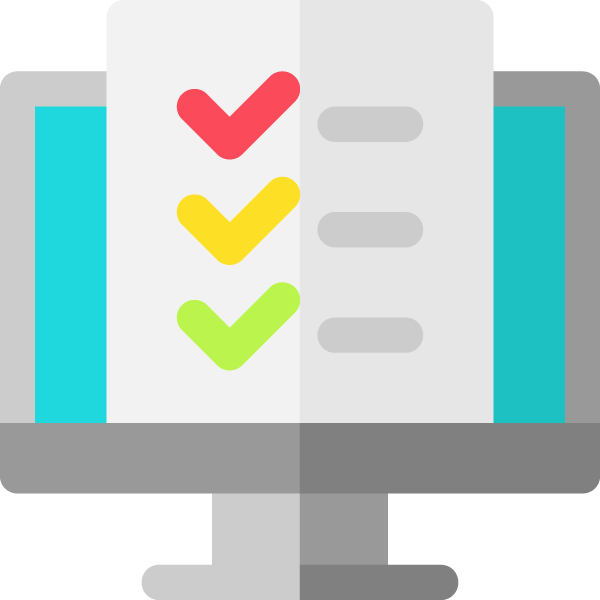Share This Post:
Standardized testing season increases the prevalence of test anxiety among students. This anxiety expresses itself differently. Some students may not show any signs of stress on the outside. But they can manifest stress in other ways. The ways in which students express it range from physical discomfort to behavioral changes.
Test anxiety is a multi-layered issue teachers need to thoroughly understand if they are to help their students. Discover proven methods that help students cope with test anxiety. Build their test-confidence by leveraging the knowledge and experience of Caroline Koehler from Celarova Education.
Introducing Our Expert: Caroline Koehler
Caroline is a seasoned educator with over 20 years of experience. She specializes in special education and general education and has worked with a spectrum of students. Caroline has taught kindergarten and worked with students with autism and severe needs. She has also provided support in inclusion and resource classrooms for grades 3-8. Caroline presently uses her vast experience to create resources that help teachers with positive behavior management and student regulation strategies. You can watch the entire conversation on Youtube!
What is Test Anxiety and How Does It Show Up in Students?
Test anxiety is a combination of fear of the test and difficulty in regulating emotions and physiological responses. Test anxiety is much more than students merely feeling nervous before an exam. Its common signs include:
Physical symptoms: Students may experience dry mouth, frequent thirst, sweating, stomach aches, headaches, and make excessive trips to the bathroom.
Behavioral changes: These are generally more subtle. Students may express avoidance behaviors like tardiness, excessive talking, and various kinds of misbehavior.
Unusual coping strategies: These are less subtle and include rocking, fidgeting, biting nails, and even chewing on clothing.

How Common Is Test Anxiety in Elementary Students?
High-stakes testing raises the prevalence of test-anxiety due to increased pressure on students. Student attendance patterns are one of the biggest red flags for anxiety. Frequently missing school or arriving late on test days may be signs of anxiety. Other signs include abrupt changes in classroom behavior, requesting to sit elsewhere to avoid distraction, refusing to transition, and overly silly behavior.
How Can I Use Coping Strategies to Help Students Manage Anxiety?
Adopting a long-term approach to managing test anxiety is the best strategy. On the other hand, attempting to manage anxiety just before testing is not a good strategy. Teachers must consequently teach students coping strategies throughout the year. Examples of helpful strategies include:
- Grounding Techniques: Have your students engage in simple physical exercises like clenching and releasing muscles as well as spinning in circles before recess. Another good exercise is having them look for rainbow colors in the classroom to calm their minds.
- Conducting Daily Regulation Activities: Have your students spend five minutes a day on mindfulness activities. These include exercises such as visualization, deep breathing, and progressive muscle relaxation. In addition, teaching students behavior-reflection skills is a great way to reduce their anxiety. Caroline’s Smart Cookie Activities and Worksheets is a great resource for achieving this and providing support.
- Encouraging Movement: Making small and controlled movements can help to release bodily tension. Encourage students to use simple movements such as hair tugging or rocking to ease built-up tension.
Making students understand that experiencing stress is normal helps them handle it better. Providing them with daily tools to manage stress will further assist with handling test-day nerves. Social Emotional Learning (SEL) activities to reduce anxiety and support regulation are another great resource teachers can use to reduce anxiety among students.
How Can Teachers Reduce Test Anxiety Without Adding Stress?
Preparing students for tests is every teacher’s goal. Achieving this goal without overwhelming students with pressure will however require teachers to take care and plan ahead. Too much pressure may backfire and heighten students’ anxiety. Effective strategies for achieving the perfect balance include:
- Creating a Predictable Routine: Unpredictability is a major driver of test anxiety. Establishing a structured review schedule a few weeks before the test will therefore help to reduce anxiety. Using Testing Schedule Kits for coordinating state-mandated standardized assessments coupled with do-not-disturb signs is a great way for reducing anxiety for elementary and secondary school students.
- Redefining the Experience: Reframing the test experience for students by making it clear that tests are not life-defining moments even though they are important can help. Students must be encouraged to see tests as a normal part of learning.
- Avoiding Fear-Based Motivation: Teachers must avoid scaring students into taking tests seriously. This is particularly the case for high-achieving students who may already be under pressure.
As one of her top-tips, Caroline recommends reminding students that they are more than their test scores. Preparation and putting in their best effort for the test without focusing too much on the outcome is what should be emphasized.

How Can Teachers Support Students with Severe Anxiety?
Additional accommodations may be necessary for students with severe anxiety. Some helpful steps that can be taken include:
- Maintaining Seating Arrangements: Consistent seating arrangements help prevent students from experiencing anxiety. Teachers must consequently take care not to surprise students with new seating arrangements on test day. If a student is used to working in a resource room, then maintain that environment.
- Using Stress Monitors: Teachers can teach students to recognize their own stress levels and practice appropriate self-regulation techniques. Caroline’s stress monitors are a wonderful resource for helping students recognize, monitor, and regulate stress.
- Involving Parents: Involving students’ parents in the management of severe anxiety at home can further provide a comprehensive approach. It can also lead to effective action and better results.
- Using First-Then Boards: Incorporating simple visuals which highlight rewards after a test can be beneficial. These boards can state something like “First, finish your test. Then, you get a particular reward?”
- Token Boards: Teachers can break the test into smaller sections. They can then reward students with tokens that encourage preferred actions. Token boards are very helpful resources that provide behavioral help.
How Can Parents Help Manage Test Anxiety from Home?
Parents can collaborate with teachers and help them by:
- Being aware of testing schedules to avoid unnecessary appointments. Teachers must equally share the testing schedules with parents.
- Encouraging relaxation techniques to students. These can include breathing exercises and relaxing music to unwind.
- Promoting a positive mindset in their children and building their confidence. Parents must emphasize to their children that effort matters more than perfection.
- Encouraging students to make small but positive lifestyle changes.
Caroline shared an eye-opening success story of a student who reported sleeping better after discovering calming music on YouTube. This shows that seemingly small improvements have the potential to make a huge impact!
Need more help or resources for managing student’s test anxiety? Visit Caroline’s website Celarova Education. It has several resources for helping students with test anxiety. You can also follow Caroline on Instagram and subscribe to her YouTube channel to check out her videos for more great strategies and tools. Also check out these easy and helpful math test prep strategies that are great for building students’ confidence for math tests.
Key Takeaways
Test anxiety can be challenging for many students. Helping them manage and reduce stress can assist to build their confidence and ensure they are well-prepared. Incorporating proven techniques, strategies, and resources can help to reduce stress. In addition, being observant for signs of anxiety and maintaining consistent learning environments and routines can help. Lastly, but most importantly, emphasizing the value of effort over perfection to students by both teachers and parents can make a huge positive impact.
What are your favorite test anxiety reduction strategies? Share them in the comments below!
kirsten hammond
Kirsten is a former 3rd and 5th grade teacher who loves helping upper elementary teachers by creating resources and sharing ideas that are engaging, research-based, and TEKS-aligned. She is a work-from-home mama of 3 rambunctious little ones and loves running, true crime, and lots of coffee.



















